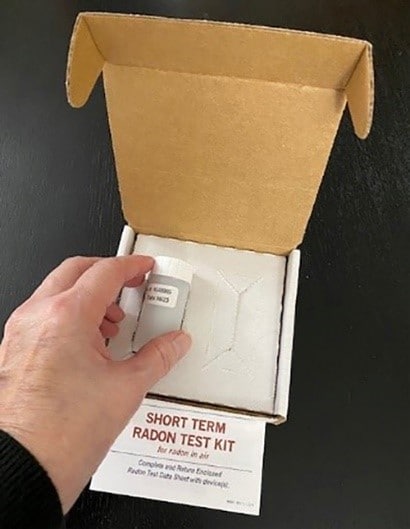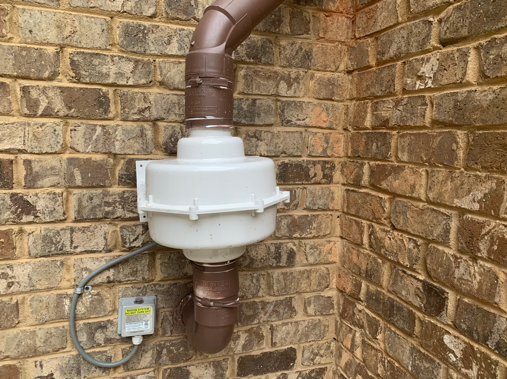Lauren’s Radon Story: Raising Awareness About Radon Saves Lives
Radon is an invisible and odorless gas that can build up in homes and increase people’s risk of lung cancer. Every January, during Radon Awareness Week, CDC encourages people to learn about the health effects of radon and how to stay safe. This was how I discovered the importance of getting my home tested for radon.
Throughout the week, CDC posted radon facts on social media. I learned that radon is the second leading cause of lung cancer after cigarette smoking. The Environmental Protection Agency (EPA) and the Surgeon General’s office estimate radon is responsible for more than 21,000 lung cancer deaths each year in the United States. However, lung cancer deaths from radon are preventable if people take steps to reduce their exposure to radon.
The Opportunity: Testing My Home

As I learned more about radon, I encouraged my family to get our home tested. Radon tests are a simple way to help you figure out how much radon you are exposed to. There are a few different ways you can get your home tested for radon. You can purchase testing kits at your local hardware store, online, or through your state’s radon office.
My family decided to use a short-term test kit. Short-term test kits measure radon levels over a few days to give you a “snapshot” of radon levels in your home. We purchased the kit at a local hardware store, then followed the instructions on the package. Once we collected the sample, we mailed it to a lab and received the results within a few days. It was easy, and it only took about 5 minutes to set the sampler up.
Our test results showed that radon levels reached more than 10 picocuries per liter (pCi/L) of air. EPA recommends installing a radon reduction system in your home if radon levels are 4 pCi/L or higher.
The Intervention: Reducing Radon Levels

Once we knew that radon levels in our home were high, we contacted a licensed professional to help us. We started by visiting EPA’s website to find someone who was certified to install radon reduction systems.
The professional helped us determine which radon reduction system would work best for the layout of our home. We decided to install a vent pipe system and fan, which pulls radon from beneath the house and vents the radon outside. The system was installed in just a few hours, and it didn’t require any major changes to our home.
We also tested our house afterwards to ensure that the system was working well. We ended up buying a long-term test kit to help us keep track of our radon levels, especially because we’re thinking about renovating or selling our home in the future. It’s important to remember that there is no known safe level of radon. We are always striving to reduce radon to the lowest possible level in our home.
Lessons Learned: Spreading the Word
Exposure to high levels of radon is preventable, but many people don’t know how radon builds up and what they can do about it. Now that my family knows more about radon, we’ve been helping to spread the word in our community. We’ve spoken with neighbors, family, and friends about our experience. We’ve also helped others figure out how to test their homes.
Raising awareness about radon can save lives. You can help share the word during Radon Awareness Week and year-round. Visit CDC’s website for helpful resources, such as radon test data and fact sheets and social media graphics.